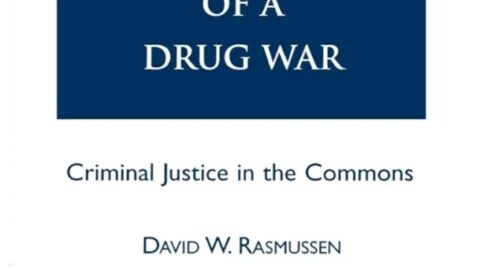Introduction: A Shift Misunderstood
Since the late 20th century, China’s rapid economic rise has fueled speculation about a “Chinese century,” with many policymakers and academics predicting China would surpass the United States as the world’s leading power.
Thomas Barnett’s analysis, however, brings a sharp corrective: the real danger is not China’s rise, but its inevitable slowing down — and the strategic desperation, instability, and global realignment that would accompany it.
Today, as we step into the mid-2020s, we are beginning to see exactly what Barnett warned about: China is aging rapidly, its economy is slowing, and the global system is rebalancing once again. Understanding this shift — and how Barnett laid out its possible consequences — is essential for grasping the future of geopolitics, economics, and society.
Part 1: Barnett’s 2010s Insight: How He Framed China’s Trajectory
Barnett’s key arguments can be distilled into several main points:
- China’s “Demographic Bomb”: China’s population is aging dramatically. Thanks to the One-Child Policy and rising standards of living, China is getting old before it gets rich enough to maintain its momentum.
- Strategic Desperation: As economic growth slows, China could become more aggressive, inwardly repressive, and outwardly nationalistic — similar to Japan’s desperation in the 1930s.
- U.S. Response Warnings:
- Be careful what you wish for: China’s slowdown won’t necessarily make it weaker in a benign way — it may become more dangerous.
- Avoid triumphalism: The U.S. must resist the temptation to humiliate China as it stumbles, to avoid triggering conflict.
- Outcompete China in influence: Especially in Africa, Latin America, and Southeast Asia — regions China has been aggressively courting.
- Japan’s Challenge:
- Japan must avoid excessive economic dependence on China.
- It must prepare for either a peaceful democratic evolution of China or a dangerous imperial reversion.
- Other Key Players:
- Russia: Align with China’s autocratic model while it lasts.
- Europe: Offer aging expertise and mentorship.
- India and Brazil: Prepare to rise next.
- ASEAN: Absorb low-end manufacturing as China graduates upward.
- Global criminal networks: Expect organized crime based out of China to expand.
Bottom Line: The slowdown, not the rise, is the key to the 21st century’s first half.
Part 2: 2020s Reality: Barnett’s Predictions Taking Form
1. China’s Aging Crisis Has Accelerated
- China’s birth rate has collapsed faster than expected. In 2023, it recorded its first population decline in decades.
- Projections show China losing hundreds of millions of workers by 2050 while the elderly population explodes.
- Healthcare costs, pension burdens, and shrinking domestic consumption are strangling growth.
2. Economic Desperation is Showing
- The property sector (Evergrande, Country Garden) is collapsing under debt.
- Youth unemployment officially reached over 20% in 2023 (and unofficially much higher).
- Xi Jinping’s increasingly aggressive nationalism (“Wolf Warrior Diplomacy”) and tighter domestic controls match Barnett’s model of a system in fear.
3. The U.S. Rebound
- U.S. manufacturing (onshoring, friend-shoring) is picking up.
- The dollar remains dominant.
- American demographic strength (relatively younger population) is an advantage.
However, Barnett’s warning about “triumphalism” is crucial here — political rhetoric in the U.S. risks becoming careless and inflammatory, which could back China into a corner.
4. Global Influence Battles
- China’s Belt and Road Initiative (BRI) is slowing.
- African and Latin American countries are reassessing Chinese investments.
- India is emerging as the new manufacturing hub.
- The U.S. and its allies (Japan, Australia, India in the “Quad”) are building counterbalances.
5. Other Effects
- Russia, increasingly isolated after the Ukraine invasion, is clinging to China but also straining under sanctions.
- Europe’s aging economies are torn between trading with China and aligning more with the U.S.
- Pakistan, ASEAN, and others are hedging their bets between China and other powers.
- Cybercrime and gray-zone warfare from Chinese actors are increasing — matching Barnett’s warning about global criminal expansion.
Part 3: How the “Matrix of Global Power” is Changing
Barnett’s predictions capture the broader pattern of empire transitions:
| Era | Dominant Power | Rising Power | Transition |
|---|---|---|---|
| 1800s | Britain | United States | Gradual handoff through trade and war |
| 1900s | Britain/U.S. | Soviet Union, China | Cold War, decolonization |
| 2000s | United States | China | Now hitting slowdown |
Today, the transition is less about war (hopefully) and more about influence, economics, alliances, and technology.
Part 4: Strategic Solutions for the U.S. and Allies
1. Humility and Patience
- Don’t humiliate a slowing China.
- Allow space for Chinese reforms without forcing confrontation.
2. Rebuild the Domestic Base
- Infrastructure, education, innovation at home.
3. Expand Global Influence Positively
- Offer alternatives to China’s BRI — based on transparency and sustainability.
4. Stabilize Alliances
- Strengthen Japan, India, ASEAN, and Europe partnerships.
5. Prepare for Fragmentation
- If China fractures (e.g., Taiwan, Xinjiang), the global system must be ready to manage new crises.
A Slowdown, Not a Collapse
Barnett’s crucial contribution was to move us away from fearmongering about China’s “unstoppable rise” and to prepare for the instability of its plateau.
Today, we stand closer to that reality:
- China faces internal cracks.
- The U.S. is poised for renewed global leadership — if it chooses wisely.
The next decade will not just be about economic battles, but about who can adapt gracefully to changing demographics, technologies, and alliances. Those who prepare for a slowing China, not just a rising China, will shape the global order for generations.
“Thomas Barnett’s World System Theory: From Concept to Current Reality”
Timeline Flow:
- Early 2000s:
Barnett’s “The Pentagon’s New Map” published — outlining the “Core” (stable world) vs “Gap” (chaotic world). - 2003–2010:
Globalization pushes forward rapidly; military interventions justified to “shrink the Gap.” - 2010–2020:
China rises as a dominant “Core” power; U.S. shifts focus to managing decline and policing Gap states (e.g., Middle East, Africa). - 2020–Present:
The Gap fights back:- Mass migration
- Cyberwarfare
- Nationalist movements resist globalization
- Elite push for “new rules-based order”
- Present/Future Tension:
Global oligarchs attempt tighter control (WEF, BIS, Five Eyes, etc.)
vs
Growing populist resistance defending sovereignty, liberty, and traditional culture.






